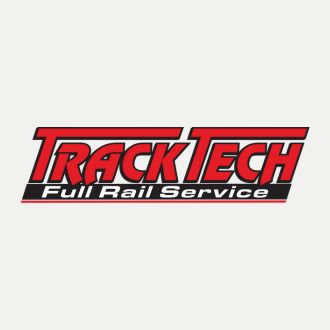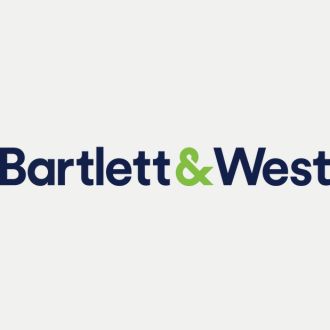Understanding Railroad Protective Liability Insurance and the Often Misunderstood Waiver of Subrogation
To most people outside the rail industry, Railroad Protective Liability Insurance (RPLI), and the concept of subrogation and by extension the waiver of subrogation are obscure contractual footnotes. To be honest, this may be true for many even within the industry as well. However, understanding how RPLI and mutual waiver provisions interact is essential to unraveling the complex web of risk allocation that underpins most every railroad construction project.
Historical Background
Historically, railroads carried their own liability insurance or self-insured for incidents involving employees, passengers, or the public. As networks expanded and railroads increasingly relied on outside contractors for projects like bridge construction, signal work, grade-crossing improvements, and utility installations, a different category of risk was created. With contractors working within or near the railroad’s right-of-way, accidents could occur on railroad owned or controlled property, thereby implicating the railroad, even when the railroad was not at fault.
In most other construction contexts, a standard commercial general liability (CGL) policy would usually address this type of risk. However, CGLs almost always exclude work performed within fifty (50) feet of a track or right-of-way. This created a gap in the availability of insurance coverage for work being done by a third-party contractor on or near a railroad. (1)
Prompted in part by the Federal Highway Administration’s safety mandates and by contractual requirements imposed by the railroads in the mid-1970s, insurance carriers developed Railroad Protective Liability policies, wherein the railroad is named as the insured, but the contractor is responsible for paying the premium. This specialized policy was developed to specifically address the gap in coverage that existed when contractors were working on or near a railroad tracks or right-of-way.
How Railroad Protective Liability Insurance Works
RPLI is project-specific and protects the railroad for losses caused by contractor operations within a defined job area and time frame. Generally, RPLI coverage typically includes bodily injury, property damage, physical damage to railroad property, and costs related to defense. RPLI is designed to cover liability claims arising from the contractor’s operations that are on or near the tracks, and for which the railroad may otherwise be held responsible based solely on the railroad’s ownership or operating rights of the area. Unlike conventional liability insurance, RPLI is written specifically for the railroad as the named insured, granting the railroad direct rights under the policy.
A Few Things to Be Mindful of
Scope of Work and Geographical Boundaries. The project description in the policy must precisely match the work performed on or near the right-of-way. Because RPLI is project-specific, the policy’s description of the work, location, and operations is critical to coverage. Insurers underwrite these policies based on the specific scope of work identified in the declarations, and any material deviation from that description can result in a coverage dispute or denial of benefits.
Coverage Terms, Limits and Duty to Defend. Confirm that RPLI limits meet contractual minimums and that the railroad is a beneficiary of the coverage. In Pacific Insurance Co. v. Liberty Mutual Insurance Co., the court emphasized that when determining coverage and the duty to defend where there are potentially overlapping coverages, each policy must be interpreted according to its own language and insuring agreement. (2)
Coordination with the Contractor’s Insurance Program. Always ensure that both the contractor’s CGL policy and the RPLI are separate policies (and not merely just an endorsement or extension of the contractor’s CGL coverage) so that the railroad is fully protected for contractor-caused losses. This distinction is critical: when the RPLI is properly structured, the contractor’s insurer cannot offset its obligations by pointing to the contractor’s CGL coverage or subcontractor arrangements.
Policy Administration and Renewal Oversight. RPLI coverage ends upon project completion, making lapses of coverage somewhat common. Therefore, it is important to carefully monitor project timelines and ensure sufficient coverage throughout the entire work schedule. Expired or incomplete coverage can void protection. It is a good idea to maintain a centralized policy log, track expirations, and require renewal confirmation before allowing work to continue. (3)
Claims Handling and Notice. Railroads should provide immediate written notice identifying the project and policy number whenever an incident involving contractor operations occurs. Late notice provisions are strictly enforced where delay impairs the insurer’s ability to evaluate and defend the claim. (4)
What does Subrogation Mean and Why Should Railroad’s Waive It?
At its core, subrogation allows an insurer, usually after indemnifying its insured (paying a claim), to pursue the at-fault third party for reimbursement by stepping into the shoes of the paid-out insured. Because subrogation involves the insured basically assigning its rights against the wrongdoer to the insurer, the insured is prevented from seeking double recovery (from both the insurer and the wrongdoer) and the insurer may be able to seek reimbursement from the wrongdoer. However, when multiple parties collaborate on a shared project—whether a construction site, a railroad right-of-way, or a commercial lease—subrogation can undermine the predictability insurance was intended to provide. To avoid that outcome, parties routinely insert a waiver of subrogation, agreeing that each side (and its insurers) will bear its own losses, regardless of fault, to the extent covered by insurance.
Like many industries, the rail industry has faced challenges in adopting AI technologies due to limited data availability and quality to use for training data. Today, the rail industry is positioned well to adopt more AI technologies due to AI advancements, access to AI tools, improved data practices, and increased digital skills and knowledge from the rail industry workforce.
Assume a regional railroad grants a contractor access to its right-of-way to replace bridge decking over a mainline track. The access agreement requires the contractor to obtain RPLI, naming the railroad as the insured. During construction, a crane operated by the contractor tips over, damaging the bridge structure, injuring contractor’s worker and a railroad flagman.
Because the accident arose directly from the contractor’s operations, the RPLI policy—not the railroad’s own property or liability program—responds to cover both the property repair and the flagman’s injury claim. The railroad is protected under a policy paid for by the contractor, and the RPLI insurer provides defense and indemnity on its behalf.
If the agreement lacked a mutual waiver of subrogation, the contractor’s insurer (or its other liability carriers) might later attempt to recover a portion of the loss from the railroad, arguing shared negligence or defective site conditions. Even though the railroad was an insured under the RPLI policy, such cross-claims could still arise through other lines of coverage, defeating the purpose of having RPLI in the first place.
With a mutual waiver of subrogation, however, both the contractor and the railroad agree that any loss arising out of the work will be handled exclusively through the insurance each has in place—RPLI for the railroad and the contractor’s other policies such as workers’ compensation and equipment insurance for its own liabilities (ex. any injuries sustained by the contractor’s worker and the damage to the crane). The waiver prevents either side’s insurer from seeking reimbursement against the other. The benefit to the railroad is twofold: it receives prompt, dedicated coverage through RPLI without drawing its own corporate policies into the claim, and it avoids collateral litigation that could stall the project or strain future working relationships.
Advantages of Mutual Waivers of Subrogation
Preserve Risk Allocation. Railroad contracts place contractor-related risks squarely within the contractor’s insurance program. Allowing for subrogation would undermine that allocation.
Control Costs. Mutual waivers prevent insurer-versus-insurer recovery actions, reducing litigation and ensuring that losses stay within the contractor’s coverage layers.
Promote Cooperation. With subrogation waived, all parties can focus on investigating and resolving claims rather than assigning blame.
Readily Enforceable. Courts view reciprocal waivers as commercially reasonable. The mutual nature enhances enforceability and reduces disputes.
Conclusion
Railroad Protective Liability Insurance is a central component of railroad risk management. Railroads should verify that each RPLI policy accurately reflects the project scope, has adequate coverage and coverage amounts and is properly coordinated with the contractor’s regular CGL policy. Equally vital are mutual waivers of subrogation, which prevent insurers from undermining the parties’ agreed risk allocation by seeking recovery against a railroad after paying a contractor’s loss. Together, these risk-transfer mechanisms safeguard railroad operational continuity, ensuring that complex infrastructure projects proceed without the constant threat of overlapping liabilities and protracted insurance disputes.
Disclaimer: This material is provided for informational purposes only. It is not intended to constitute legal advice.
References
1. See 23 C.F.R. § 646.107(b) (2024), first published in 1974. A requirement to have RPLI was codified in federal regulations such as 23 C.F.R. § 646.101 et. al, for federally funded grade-crossing projects. From there, the concept spread to nearly all third-party access and construction agreements on or around railroad property.
2. Pacific Ins. Co. v. Liberty Mut. Ins. Co., 953 A.2d 1212 (Del. 2008).
3. St. Paul Fire & Marine Ins. Co. v. CSX Transp., Inc., No. 07-CV-2117, 2007 WL 2396542 (C.D. Ill. Aug. 14, 2007) (holding no coverage under the RPLI because the injury did not arise out of acts or omissions related to the described work).
4. See, e.g., Bankers Ins. Co. v. Macias, 475 So. 2d 1216 (Fla. 1985) (holding that untimely notice creates a rebuttable presumption of prejudice in favor of the insurer).
5. See, e.g., Rural Mut. Ins. Co. v. Lester Bldgs., LLC, 2019 WI 70, ¶¶ 36–38, 929 N.W.2d 180 (Wis. 2019) (enforcing waiver of subrogation as integral to the parties’ negotiated risk allocation); Lexington Ins. Co. v. Entrex Commc’n Servs., Inc., 275 Neb. 702, 749 N.W.2d 124 (2008) (same; waiver barred insurer’s recovery for property damage covered by the owner’s policy).










